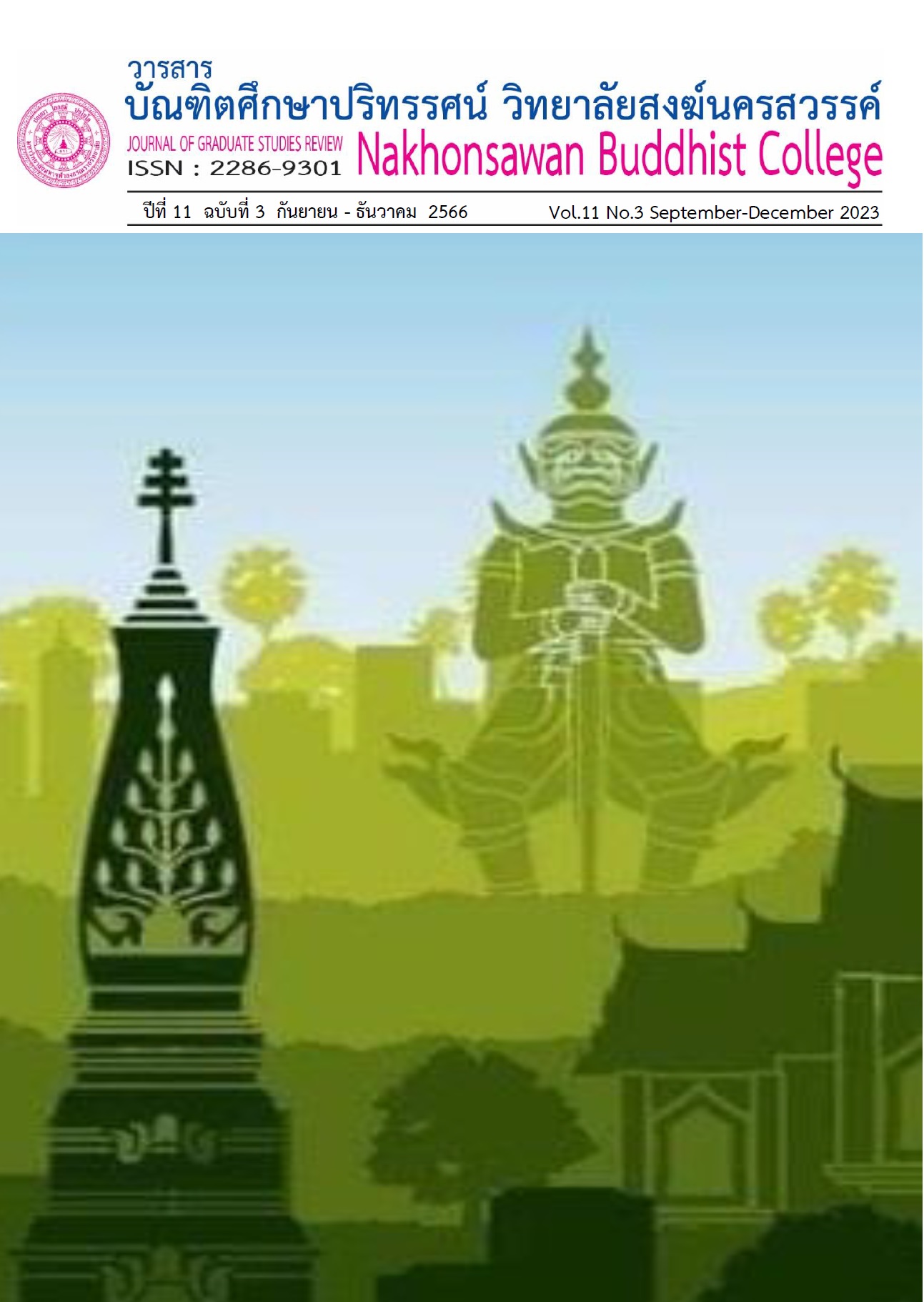Analysis of Abhidhamma prayer in Buddhism
Main Article Content
Abstract
Research subject Praying the Abhidhamma in Buddhism The objectives were 1) to study the traditions of chanting the Abhidhamma in Buddhism; 2) to study the method and procedure of the chanting of the Abhidhamma in Thai society; 3) to analyze the chanting of the Abhidhamma in Buddhism. this research It is a qualitative research. by analyzing the data obtained from the study of documents The results showed that 1. Abhidhamma is the highest virtue excellent nature the supreme virtue or the Dharma, which is the main teaching as the main principle, is the real content of Buddhism summarizes the main points or the substance of all Abhidhamma is to teach the true nature of this first verse It aims to show that the Abhidhamma is only the vision of the Buddha's omniscient (Wisdom) and not the ability of others to compose himself The Abhidhamma Pitaka is a part of Buddhism. It is a Buddhist tradition of all Buddhas who had to show their gratitude to the mother by going up to preach the Abhidhamma to each of them was called the Buddha Nimaya At that time, all beings in the world There is not much faith in Buddhism because Buddhism has just begun to emerge in the human world not long ago It's only been a little over six years, which is still not widespread for the people's faith to be fully and universally established The Abhidhamma is very profound and profound. By the content of the Abhidhamma Regarding all conditions there is no fun. A person who is able to support the taste of the Abhidhamma Must be a person who has a firm faith, has greed, hatred, and delusion in a lesser nature and has created the prestige of wisdom that has been known in the past 2. Methods and procedures of prayer in Thai society for the general public Inviting monks to pay homage to the deceased whether ordinary citizens or be a master class There is no limitation whatsoever. Suppose a relative has died. After having arranged the funeral according to tradition, then go to invite 4 monks at the temple to pray at night, starting from 1 pm to 4 pm, or maybe some more. However, it is very convenient for both the monks and the host. Determine the number of days to pray. It may be 3 nights or 7 nights or more or less according to the strength of faith. As for those who are honored and have many attendants, they can perform merit by praying for more than 3-7 nights, up to 50 nights, or even up to 100 nights. "Inviting monks to pray to the Abhidhamma" or "inviting them to pray to the Dharma", which is immediately understood by the general public that Inviting monks to pray for the funeral of Phra Pali that the monks recite it as a true Dharma chapter And it is an ancient Indian language which is difficult to convey for those who do not have a basic knowledge in this area 3. The purpose of the prayer This funeral tradition also has its roots in a deep, abstract meaning That is to say it is a tradition based on Buddhist teachings. It is the implementation of the teachings of the Lord Buddha. who have preached to all Buddhists to do what is merit and merit according to Buddhism Buddhists when an event occurs will foretell that event and then do something as a merit It is a virtue of various rituals that we have practiced both in the past and present. would have a purpose in the early stages, perhaps not related to religion But when religion arises Therefore, the leaders took the ritual to get involved with religion. To create faith, alchemy and holiness along with order, form and practice especially the ritual of chanting the Abhidhamma In Thai society which is still considered important and is still a valuable tradition because most of the Thai people believe in Buddhism And there are rituals related to funerals according to beliefs and Buddhist ethics by inviting monks to pray to dedicate merit to the deceased It is also to create merit for those who are still alive.


